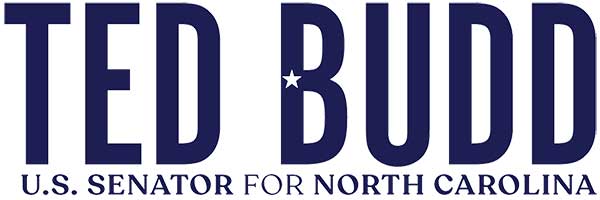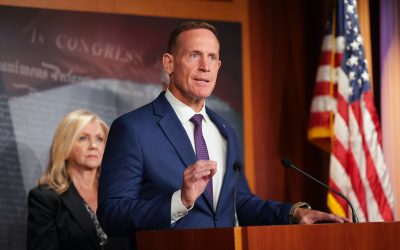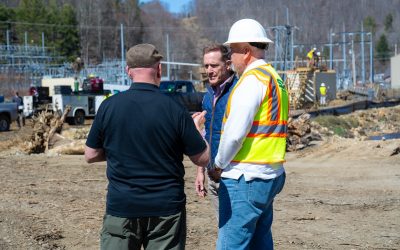Washington, D.C. — Senator Ted Budd (R-NC) has joined a bipartisan letter to the Department of Defense suggesting new ways to improve transition assistance that better support the needs of the men and women who ensure our military has the tools and weapons needed to succeed.
“Service members and veterans are uniquely positioned to fill skilled labor needs due to their distinctive military skills and experiences. Upskilling and educating service members is a vital effort, but so is matching service members who already possess a valuable skill with job openings in the defense industrial base,” the Senators said, “It is crucial that the DoD explore how current transition programs can be better utilized to guide service members and veterans towards careers that fill critical gaps in the defense industrial base.”
The letter was led by Senator Marco Rubio (R-FL) and co-signed by Senators Kirsten Gillibrand (D-NY), Thom Tillis (R-NC), Jacky Rosen (D-NV), John Boozman (R-AR), Mark Kelly (D-AR), Markwayne Mullin (R-OK), Jeanne Shaheen (D-NH), Marsha Blackburn (R-TN), Tim Kaine (D-VA), and Kyrsten Sinema (I-AZ).
We write with regard to U.S. Department of Defense (DoD) efforts to leverage transition programs for military service members and veterans to address critical gaps in the defense industrial base workforce. As you are aware, a robust defense industrial base is vital to America’s national security and essential to military readiness. However, the U.S. faces challenges meeting skilled workforce needs, which limits manufacturers’ ability to produce everything from basic goods to the complex weapons systems and munitions needed in a potential armed conflict. Service members and veterans are uniquely positioned to fill skilled labor needs due to their distinctive military skills and experiences. Upskilling and educating service members is a vital effort, but so is matching service members who already possess a valuable skill with job openings in the defense industrial base.
It is crucial that the DoD explore how current transition programs can be better utilized to guide service members and veterans towards careers that fill critical gaps in the defense industrial base. It is no secret that the U.S. shipbuilding industry is in a precarious position with some analysts stating U.S. ship production has reached its “worst state” in decades. Even a cursory view of the skilled labor needed for a thriving shipbuilding industry reveals that shortfalls in production often stem from workforce challenges. The welding workforce, for example, will face a nation-wide shortage of about 330,000 welders by 2028. Similarly, the Navy will face a shortage of about 100,000 skilled trade workers in the submarine industrial base by 2034. Therefore, it is of utmost importance that transition programs match skilled veterans and transitioning service members with civilian jobs in industries that support U.S. military readiness.
Specifically, the DoD should examine programs’ unused capacity, as identified in recent studies, which can be used to support transitioning service members’ move to the defense industrial base. For example, the DoD should investigate additional opportunities to provide on-the-job training prior to the end of an individual’s time in service that could prepare him or her for an in-demand civilian role. The DoD should also devote more resources to its oversight of these programs in order to maximize the value to transitioning service members while eliminating redundancy. Additionally, the DoD should increase the transparency of its process for identifying gaps within the defense industrial base that could benefit from service members’ and veterans’ unique skillsets, and promote such opportunities as part of current transition programs.
Transitioning service members and veterans must be provided with the necessary resources to move directly from their service into skilled trade jobs that are vital to our national defense. In 2022, the Government Accountability Office (GAO) revealed that nearly 25 percent of service members did not attend transition assistance classes and the DoD has not utilized data to improve participation in these programs. Several employment assistance programs, such as the DoD’s SkillBridge and Credentialing Opportunities Online, help equip service members with the skills needed for success after their service. Improved data collection on the use of transition assistance programs should not only aid marketing efforts to increase participation in these programs, but also support timely job placement for transitioning service members and veterans placement into immediate employment.
Given the significant federal investment in transition assistance programs—particularly those focused on education—we must identify whether current funding and resource levels are sufficient to support program objectives and ensure these programs support other national security objectives where possible. While education-focused programs like the GI Bill are invaluable, only 10 percent of the federal expenditures for military-to-civilian transition programs are dedicated to employment-specific assistance programs, with many programs lacking consistent and reliable funding. Given the need to fill critical workforce gaps across the industrial base, additional investment towards job-focused support could better enhance our service members’ transition to the civilian labor market, and in turn, meet the needs of our industrial base.
Therefore, we request information on the issues identified, as well as answers to the following questions:
- What specific transition programs currently guide service members towards careers that support the defense industrial base?
- How successful have these programs been in attracting service members and helping participants acquire defense industrial base jobs?
- What steps is the DoD taking to identify and address critical gaps within the defense industrial base that transitioning service members could fill?
- What adjustments or enhancements to current transition programs does the DoD recommend to better align them with the needs of the defense industrial base?
- How does the DoD assess the current allocation of resources between education-focused programs and employment assistance programs for transitioning service members?
- Are current resources adequate to support the needs of transitioning service-members, as well as national security objectives?
- How does the DoD coordinate with the Departments of Labor and Veterans Affairs to ensure proper implementation and oversight of current programs, in order to reduce redundancy and red tape?
- How does the DoD currently promote civilian occupations critical to the defense industrial base to service members and veterans?
- What additional legislative or budgetary support does the DoD require from Congress to enhance transition programs that bolster the defense industrial base?
- Please provide an update on implementation of the recommendations in GAO’s report titled “Servicemembers Transitioning to Civilian Life: DOD Can Better Leverage Performance Information to Improve Participation in Counseling Pathways.”
We appreciate your attention to this important issue and look forward to your response.
###



